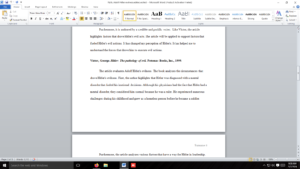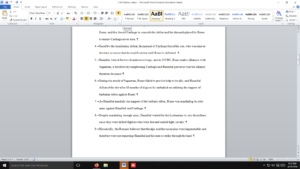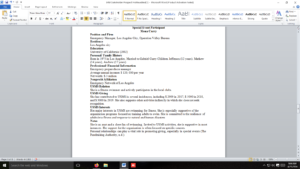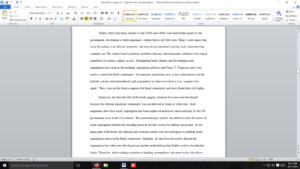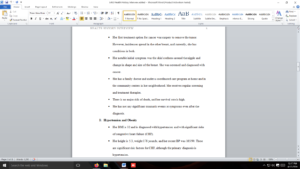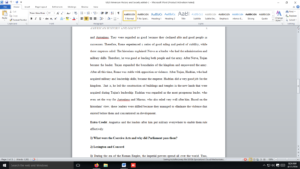Rhetorical critical analysis essay
You will be writing a rhetorical critical analysis essay. No first person perspective.
This is a not a first-person narrative, personal commentary, or book review. There is nothing “autobiographical” in nature, also known as an “author’s bio,” to be explored within this essay assignment. If your readers are interested in reading about Maxine Hong Kingston biography, there is plenty of information out there; this is not your focus.
Instead, your goal is to create a working thesis, based off an area you found interesting in reading the book, while using the PDFs, etc., to create a “working thesis.” However, it is your responsibility to draw connections, even when they are not so obvious, to the “Essay Prompt/Topic” below, using the primary text, academic/scholarly PDFs, and other content having been provided for you in this course, in effort to support a solid thesis statement and/or argument of the essay.
TIP: Ground your argument/position with a philosopher(s) and/or ideologies from the course text(s), especially since there is no use first-person allowed. If you elect to write in first person, you will have failed the essay assignment. Write a minimum of a five, full (5) pages, MLA-formatted essay (acceptable, but not required to go over five pages). Anything less than a full five (5) pages will result in a compromise in points. This means you did not meet the “minimum requirements.” Your Works Cited page is not considered part of the minimum five (5) full pages.
Supporting your Thesis & Minimum Sources and Citation Requirements *Six (6) Citations Total
1. Support your thesis: Use a minimum of three (3) citations from The Woman Warrior: Memoirs of a Girlhood Among Ghosts, ideally to support your thesis.
3. *Select one (1) academic/scholarly source on your own: Utilize your Fresno City College Library Database skills.
a. This can be a book, film, academic/scholarly article, and more.
b. Regardless of what you select, it must be accessed it from the Library (online).
c. Disclaimer: No outside sources, other than the FCC Library requirement is allowed. Any outside commercialized, mainstream sources such as Wikipedia, Merriam-Dictionary, Walt Disney references, social media, general websites, Yahoo, etc. Instead, any and/all contributions must be academic/scholarly in nature, and through the use of the Fresno City College Library database (only).
No exceptions. In the end, it will look like this (Citations | Sources | & What’s Listed on Your Works Cited)
• Three (3) citations from The Woman Warrior: Memoirs of a Girlhood Among Ghosts
• Two (2) citations, one from two (2) different sources that come from the academic/scholarly PDFs provided for you in this course.
• One (1) citation, from one (1) academic/scholarly in nature that will come from the Fresno City College Library. Minimum Total number of citations: six (6) Minimum Total number of sources: four (4)
Answer preview
Kingston uses pathos to make the reader understand how her aunt’s experience was centered on the victimization of women and girls to promote change on the stereotype towards the Asian women in America. Chinese who migrated to America risk articulating gendered expectations in the immigrant settings (Shi, 31). In other words, the No Name Woman shows how the outcomes of the act of adultery by her aunt were a subject of women’s oppression. ”It was probably a girl; there is some hope of forgiveness for boys, (Kingston, 232). Kingstone evokes sympathy from the reader to her aunt, her cousin, and women in the Chinese culture. In this version of the story, readers understand that if an illegitimate boy would be forgiven and accepted in the village, then the culture was not against adultery, but women were destabilizing the social code (Schueller, 422). Kingstone successfully portrays a new Chinese American female identity by challenging the stereotype that Asian women were committed to their oppression (Mok, pg 61).
[1705 Words]
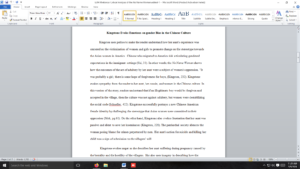
Rhetorical critical analysis essay

